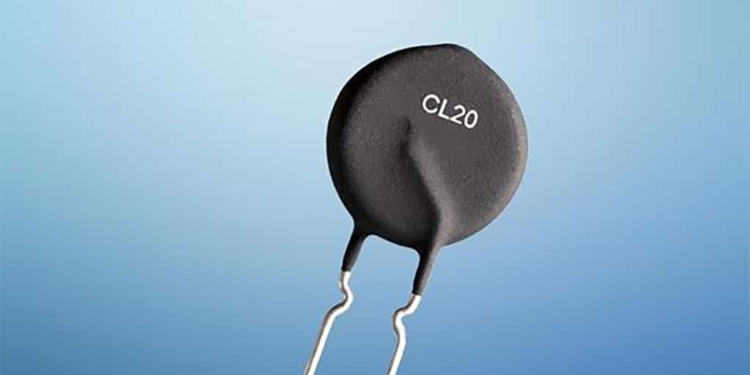Source: Electronic Product news
The PTC circuit protection thermistors can be used as an alternative to fixed resistors, claimed to provide the industry’s highest voltage rating with the lowest available resistance.
Ametherm has released a series of ceramic PTC circuit protection thermistors with high voltage ratings paired with low available resistance. The CL20 Series is an alternative solution to fixed resistors and are optimized for inrush current limiting in pre-charge circuits, degaussing circuits, heater applications, and overcurrent protection.
Claimed to provide the industry’s highest voltage rating with the lowest available resistance, the thermistors boast voltage ratings up to 1,200 VDC and maximum energy ratings to 600 J. The thermistors offer five resistance values at 25°C from 7.0 W to 100.0 W with tolerance down to 25%. This accommodates a variety of pre-charge times, said the company, and the resistance values do not change over the −40°C to 110°C operating temperature range.
In high-voltage applications, the CL20 thermistors offer stability and reliability and can withstand hundreds of hits of maximum inrush current without degrading, said the company. They also don’t need time to reset, which prevents large inrush current during repeated use because their resistance remains in a high state.
The series boasts a dissipation constant of 22.5 mW/°C, a heat capacity of 2.0 J/°C to 3.4 5J/°C, a transition temperature of 120°C, and a thermal time constant of 65 s. Switch and continuous currents range from 450 mA to 1750 mA and 225 mA to 850 mA, respectively.
The thermistors feature easy PCB mounting, a diameter of 22 mm, and straight leads. Most of the devices also come with optional outside or inside kinked leads. Smaller versions are available with diameters ranging from 6 mm to 20 mm. The device specification table can be found here.
The CL20 Series is available direct or through distributors such as Digi-Key and Mouser. Samples and production quantities are available now, with a factory lead time of 10 weeks. Volume pricing in the U.S. begins at $1.14 each in quantities of 1,000.
































